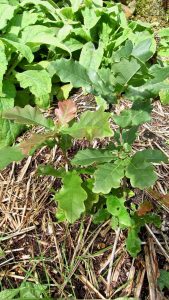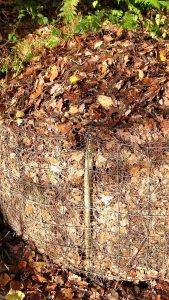In this increasingly stressed and stressful world, we need to nurture the healing balm of gardening in the slow lane.
A year ago, I decided it was time to go slower in my garden. I vowed to favour unhurried over haste, swap frantic for sedate, and make slow gardening the nemesis of fast.
It might just be my age, but the roots of this urge to be less hurried, less rushed, have grown ever deeper. Feeding those roots is a realisation that everyday life around us shows little sign of easing up; in many respects, it seems hell-bent on accelerating. I may not have got quite so much done since I touched the brakes, but I got there at a steadier pace.

Other stuff – big, profound stuff – is pressing its pedal to the floor. Our entire natural world is changing frighteningly fast and uncontrollably, if the many extreme global weather events experienced during the past year are anything to go by. Hence I’ve craved slowness, and found it in my garden and greenhouse – even amid spells of fast-moving extremes.
This doesn’t mean I’m moving at a snail’s pace to get jobs done (now that would be nice), but it does mean I am revisiting and relishing the slowness inherent in the unrushed goings-on that keep my garden quietly ticking.
I will soon be diving into a slow-made mound of mulch, made almost entirely from faded wild fern fronds cleared from my wild banks, to allow eager snowdrops and primroses to soak up January sunshine. Dead fern fronds are tough and take an age to rot down, so they’re ideal candidates for gardening in the slow lane. All I do is make a big, dome-shaped mound with them, and let them be (it soon becomes an ephemeral habitat for voles and other wildlife). A year on, as I’m forming the next mound, the year-old one is ready for business.
A year of patient decay rewards me with a coarse, dark brown material that still shows its origins. It makes a rough, all-purpose mulch. Left another year, only a few identifiable frond fragments remain, and the mulch is more decayed and crumbly – good enough for a home-made peat-free potting mix (if I need something extra-fine, I can sieve it). Stubborn coarse bits just get added to the adjacent mound.
Where a mound is left for a full three years, the result is crumbling, smooth-to-the-touch bliss. There is a downside to this more sedate way of doing things: the longer you leave it, the less useable mulch there is at the end. But in my pursuit of slowness, I’ll happily take the smooth over the rough. Time does all the hard graft, not me.

Hard work abounded when I began to carve my garden from this bracken-riddled hillside 20 years ago. In making my slate-defined terraces, I excavated, by hand, great heaps of bracken rhizomes. In those energetic days I became obsessed with building great big ‘hot’ compost heaps – huge mounds, some almost as tall as me, that reached too-hot-to-touch temperatures in their core and spouted plumes of divinely decay-scented steam on spring nights.
In those days, speed seemed essential. I turned and re-wetted the hotties religiously, several times, until they got warm no more. This was full-on, frenetic gardening – no wonder I crashed out on the sofa after a turning session. I loved it then – and it helped my garden grow – but now I’d struggle to show it such dedication.
Today’s compost-making is a slower, more leisurely affair; hot and fast have been ousted by cool and slow. Anything rottable is simply layered into circular, 1.8m wide and 90cm tall cages made from galvanised stock fencing. These don’t heat up or billow steam, and I can slowly keep filling a cage for a couple of years before it gets anywhere near full. Then I cover it with a sheet to stop downpours washing the goodness away, and it’s down to time to work its tortoise-like magic.
What I harvest is every bit as good and useful as what the hot heaps used to produce – except that nowadays it’s followed by gentle nodding off, rather than crashing out.
A beautiful byproduct of cool and slow heaps is that an array of garden inhabitants get to move in. Small mammals, frogs, toads, newts and slow-worms all take up residence on the ground floor, some hunkering down for winter. Myriad bugs and insects dance in and out of the surface of the heaps, drawing darting, scolding wrens and flick-flick-flick blackbirds and thrushes.

At night, slugs and snails feast unseen as rot sets in. Deep in the heap, small, fast-moving compost worms are busy eating their way through its contents, charging their casts with a spell that makes plants grow. I adore seeing all of this happening at nature’s placid, calming pace; it makes me stop to watch it.
The alchemy that underpins so much of my soil-building and growing is one that simply can’t be speeded up or made to happen faster: making leaf mould. This is the kind of slow, tranquil gardening that I truly resonate with. Whenever I see adverts screaming ‘make compost in just 30 days!’ – alongside all the plastic gubbins needed to achieve that – my antidote is to imagine the quiet coming-about of leaf mould.
I picture brown and gold leaves clattering down from the oaks, then me leisurely raking and bagging them up, and tipping them into one of my big cages. After a few days of rake-bag-tip-repeat, I walk away, and an unseen universe of microbes and fungi move in, to take their own mouldering time. Nothing more is needed from me, for two, maybe three years, until the soil calls for me to feed it some dark, matured, life-giving mould.
I won’t hurry. I’ll cherish every shovelful, savour its sweet, earthy scent, salute its alchemic, soil-making properties. I’ll carry it, slowly, to where new roots are waiting, while nourishing my own.
I’ll take my time.
Text and images © John Walker
Find John on Twitter @earthFgardener


